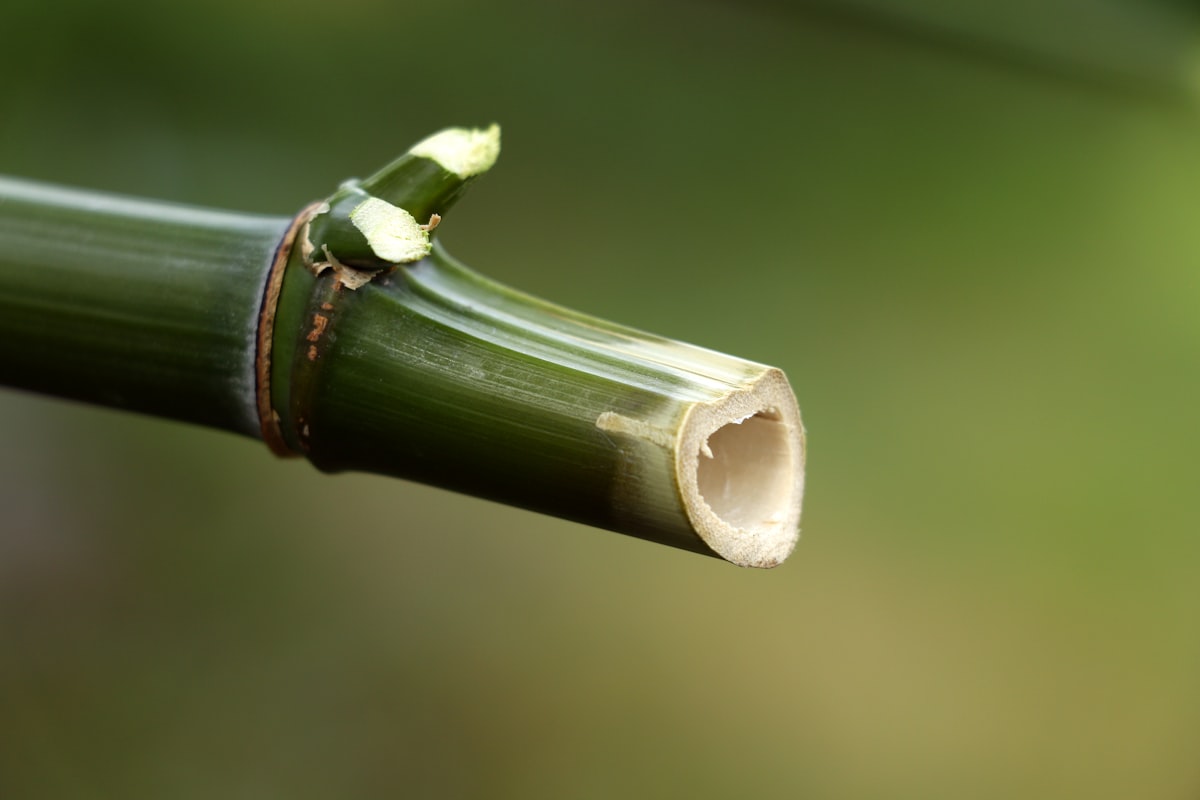Being flexible is a superpower in a world of filled with the inflexible. Karatedō teaches mental strength through flexibility.
Setsu do Motsu [pronounced “set-sue dough mah-tzu”] means “strong like bamboo” — and provides multiple layers of understanding about how important flexibility is, and how important flexibility is as a component of being strong.
There is no doubt that, both in Asian and in Western cultures, the phrase “be like bamboo” has become a hackneyed stereotype. This is unfortunate, because there is a tremendous depth of multiple layers of understanding and meaning in Setsu do Motsu. It is important to put aside the superficial, fortune-cookie understandings of “be like bamboo” and spend the energy and time required to consider the true, and more nuanced, lessons that contemplating the strength of bamboo offers us.
The Literal Meanings Within the Kanji
Setsu do Motsu is actually a very old expression. In more modern Japanese, we might say Tsuyoi Yōna Take (強いような竹) — in fact, a close look at the last kanji in that expression (take or 竹) shows us the kanji for bamboo — and it can also be found at the top of the kanji setsu 節.
Setsu do Motsu literally means “the knots, by degrees, measured” and refers to the knots of a bamboo branch. Because the knots of a bamboo branch are carefully spaced out to provide strong support, the bamboo branch is strong and flexible. Too many knots would compromise the structural integrity of the bamboo, too few would impede its ability to be flexible enough.
Just the right amount of knots makes the bamboo branch strong and flexible.
Bamboo is strong for more reasons than just the structure we see above the ground, however. Bamboo trees have an intensely strong and complex root structure; so strong in fact, and so pervasive, that it is often very hard to eradicate a stand of bamboo.
Many times, it is the part of the bamboo that we do not see which contributes to its incredibly flexibility and strength.
For these reasons, Setsu do Motsu is an incredibly powerful and useful concept for our daily lives.
Strength Through Flexibility
Like bamboo, if we are rigid and unyielding, our strength and resolve becomes brittle. The first storm that rocks our foundation can upset us to the point of breaking.
But if we emulate the bamboo tree, rather than being rocked by a storm we simply flex with it, and keep flexing until such time that the storm passes. Then, again like bamboo, we spring back to our original position, seemingly unaffected.
Strength Through Strong Roots, Powerful Stability
But also remember the incredible root network that a stand of bamboo possesses. So too, our roots — our foundation in self-assurance, self-confidence, clear planning and strong goals — are an important part of continuing to be strong.
Yes, we must be flexible, but we must be flexible from a position of solidity and unyielding vision of our goals and our values. From this strong root network, we can weather anything — just like bamboo.
Hidden Strength, Meeting Challenges
Bamboo also brings to mind other important properties.
Bamboo as a plant (in fact, a tree) doesn’t look all that impressive. Somewhat thin trunks, wispy leaves, and of course, great flexibility (somehow we tend to see flexibly things as “weak” and strong, and brittle things, as “not weak”).
Yet, bamboo is very strong, in fact.
So this leads us to consider that things which might appear weak are actually quite strong. We must be reminded to not underestimate our opponents, and to not discount obstacles in our path that might appear small, but are in fact, significant.
Bamboo “springs back” once the weight upon it is lifted: once the snow and ice melt, bamboo springs back to pointing upwards, strong and powerful. We too can spring back from adversity, and in fact, we must. Bamboo teaches us that the act of springing-back is a sure sign of strength.
Constant Readiness and Simplicity
Note also that bamboo is really a minimally-finished product. Look at a most bamboo products, and you’ll see that very little is actually done to the bamboo itself to finish it. Unlike other woods, to make something from bamboo requires little extra work.
It is this constant state of readiness that is something worth emulating, and bamboo is ever-ready as a raw material.
Concurrent with the notion of being ever-ready, is that of simplicity.
Bamboo is a simple structure (deceptively so, of course). And in this simplicity, lies some of its strength. This is worth considering when one thinks of one’s own life: simplicity in life leads to a strong life, and a life more free of strife and friction, and more full of meaning and accomplishment.
"The bamboo in its simplicity expresses its usefulness. Man should do the same.” — Kensho Furuya, Aikido master teacher
Remove the strife and friction from your day, remove the clutter from your home and workplace, and the clarity of mind and stillness of spirit will let you blossom.
Clutter, strife, friction, complications — all these are the weeds that can choke off your spirit and complicate the focus of your mind.
The Power of Emptiness
One might also consider that at the core, bamboo is actually hollow. This emptiness isn’t a weakness for bamboo, however: it is instead a part of it’s structural strength. Emptying our mind so that we can receive new thoughts, new approaches, new ideas can also become our strength if we allow it.
We’ve probably all heard the story of the student who travels to see his master. Sitting down with this man he has revered for so long, he asks his master to teach him, to give him enlightenment. And the master nods sagely, and asks the student to sit and drink some tea.
Of course, the student is honored, and sits, back straight, eyes dancing with the anticipation of learning, of secrets about to be revealed.
The master teacher takes his teapot and begins pouring tea into the student’s cup, all the while beginning to speak softly. And as he speaks (of topics not consequential, by any means) the student sees the tea reach the top of the cup, and the master teacher continues to pour.
And as his master continues pouring, seemingly oblivious, the student sees tea spilling over the edges of the cup, onto the table, and then even trickling in a steady stream onto the floor.
Finally, the student can take no more of this, and politely asks the master: “Don’t you see, the cup is full, you can’t put anything more in it!”
The master teacher stops pouring, looks at the student, and replies “That is true. One cannot put more into a vessel that is already full. When you can empty your mind of the past, of the clutter of old ideas, then come back, and I will pour new learning, and new ideas, into you.”
We need to be an empty cup. We need to be able to open our minds, to put aside preconceptions, to store away old experiences, and old ways of doing things. Only in this way, only in the way of being like bamboo, and being empty, can we learn and grow, and become able to be filled with new ideas.
The Right Time, The Right Season
And as anyone knows that has ever planted bamboo — the bamboo grove is almost impossible eradicate, and is among the fastest-growing plants anywhere.
However, the growth of bamboo isn’t dramatic. Watching bamboo grow is about as exciting as watching paint dry (in fact, paint dries a lot faster than bamboo grows). This is important to keep in mind: our growth, like that of bamboo, is slow and in gradual steps. We occasionally make big break-throughs, but we usually only grow in small steps, and our progress is measured in centimeters, not in kilometers.
Bamboo also doesn’t grow at equal rates throughout the year. Bamboo grows slower during the “rainy season” of Spring and Autumn than it does in the Summer and Winter. We also have our own “seasons” — sometimes our ability to grow, to move forward, changes from time to time. We might be more productive in the morning versus the afternoon; we might be more ready to tackle a big project in the long days of Summer, or perhaps we are more productive and more open to growing in the darker days of Winter. We too have seasons, like bamboo.
Being Like Bamboo
Like bamboo, if we set ourselves on a path of constant-growth, of constant improvement — we too will be unstoppable in the pursuit of our dreams.
Like bamboo, we will be strong in our flexibility.
And we will bounce back from adversity just like bamboo shakes off the weight of snow and ice.
And like bamboo, we will grow when it is time for us to grow, and we will constantly learn and be open to new opportunities and powerful new ideas.
We will be strong, like bamboo.
| Kanji/Katakana | Meaning |
|---|---|
| 節 | section (setsu) |
| 度 | often (do) also: frequently, every time |
| 持 | by degree (motsu) [when combined with 度] |
Editor's Note: This lecture was first delivered by Sensei in San Rafael, California on 23 July 2014, and then again at the Goju Karate NYC Dojo on 1 March 2023, and then once more at the Goju Karate NYC Dojo and via Livestream on 3 March 2023.





